The ancient land of Azerbaijan is steeped in history and folklore and discovering the country’s superstitions can be a lot of fun. To get you started Visions has explored several sites where locals and travellers are welcome to come and make their dreams come true…
The Church of Kish
It’s the house of God … There is so much diplomacy in this simple statement made by a tour guide at a small Albanian temple, where the curvy old street will lead you, in the Kish village, up in the mountains of the Sheki region.
Although obviously Christian, people of all religious affiliations are crowding the small yard around “the temple.” There are no symbols like crosses or images of saints, except for maybe a part of the building’s design on the top of the ceiling, which is somewhat reminiscent of a cross. The abundance of intricate details attracts the attention of all, both inside and outside the temple. An absolute winner of course is the display housing the ancient remains of the people found beneath the sanctuary, about five metres below. The remains are carefully protected by the glass and are quite far from the surface (three to five metres).
whether a lucky coincidence or a carefully planned design, every angle is a picture-worthy scene
As I walk around the temple there is no escaping the feeling of actually touching time. Despite the renovation works done in 2000 this place breathes the air of another era, and once you enter the gates of the small temple you become disconnected from the rush of the 21st century. Inside, it is surrounded by beautiful rose bushes, apple and persimmon trees, and whether a lucky coincidence or a carefully planned design, every angle is a picture-worthy scene. An interesting feature are the models of similarly styled temples found all over Azerbaijan – in Qakh, Kelbajar, Karabakh. They all look different but somehow similar at the same time. We’ll visit all of them! says a small boy next to me. Maybe not just yet, but definitely someday, says his mother as he stares at the sand-coloured model of the biggest temple of this kind in Azerbaijan, located in Karabakh.
There are a few people in the temple when I walk in, all occupied by different details of this beautiful sanctuary. The first thing I see is the massive chandelier and I already know the angle I’m going to try for the picture. I hear people talking about jewels that used to belong to a princess, whose remains we saw in one of the protected sites outside, and under a thick glass are carefully laid pearl rings, earrings, and combs. A goat was a sacred animal at one point and the remains of one at the centre of the temple serve as proof. My attention then switches to a girl who is desperately trying to stick what looks like a coin to the wall. What’s she doing? I ask a guide. She’s making a wish, she answers, smiling.
This temple is one of many sacred places in Azerbaijan where people of all faiths come to pray or make a wish. Each place has its own “rules” or “ways” of exactly how to make a wish. They are fairly simple, usually requiring a simple object such as a coin and a solid faith. At this specific temple, in Kish, keeping your wish in mind, you have to rub the coin against the wall until it sticks, which means that God has accepted your prayer. But the guide made a very thoughtful point, not to discourage all those who couldn’t get their coins to stick: it’s the House of God (Allahin Evi – Ed.) after all, so He hears all prayers, regardless of the coin. This is the attitude I value most in our country - the acceptance of all, regardless of factors that often divide people, like faith, gender or nationality.
Besh Barmagh
Which brings me to memories from yet another sacred place in Azerbaijan, Besh Barmagh. Roughly translated as Five Finger Mountain, people say this place brings you to it without you ever realising, whenever you need it most. Whether it’s true or not, without any particular aim, I found myself in the area several years ago.
Stopping at a line of small food shops serving things like lule kebab with onion and herbs in lavash, corn on the cob or nuts (if in season), I wondered if the development of this rest stop was due to the impressive amount of pilgrims, tourists or just tired drivers like myself, looking out at the enormous mountain that looks like the palm of a hand reaching towards the sky.
Intrigued by how everything would look from the top, I decided to climb up and take pictures from above. The climb itself wasn’t too bad; every time I looked around, the view was only getting better. At one point, a wide plain opened out with several parked cars and a large family making lunch. Picnics like these are customary in Azerbaijani regions: fresh air, meat, vegetables, a small fire and a gorgeous view, all of which comes with the open and generous hearts of our people. As I was passing by, I asked one of the women which of the three paths I should take to continue my way to the top. The whole family began giving very detailed instructions and insisted I eat something with them before setting off. Thanking them for their invitation, I continued my way up, amused by yet another demonstration of our country’s genuine openness and willingness to help everyone, even those they don’t know. Among all their descriptive instructions they asked if I was going there to make a wish, which triggered a vague memory that this place was sacred, but I wasn’t aware of people going there to make a wish.
Each place has its own “rules” or “ways” of exactly how to make a wish
The initial aim of the climb faded into nothingness when the beauty of the landscape took away my breath. Looking out at the limitless horizon, I caught myself thinking about the times when a fortress and a caravanserai existed on this mountain. Various sources claim different names for the fortress - by some it was Shirvan, by others it was Musa. Centuries ago, possibly, someone was standing at the same spot, watching the same line of the horizon disappearing into vastness, and looking into the future, while I tried so hard to imagine the past.
At the top I was greeted by a wrinkled lady, sitting on a small bench with various palm-sized rocks in front of her. With weak hands, she motioned me to come and sit by her. There she gently, but with surprising confidence touched my shoulders with the rock while whispering prayers to remove the “evil eye.” Then she gave me several caramel candies out of a cellophane bag hidden in her apron. I’m sure there was a purpose to those too but I simply thanked her and followed the guide to the opening in the mountain.
By the carefully folded money and numerous coins scattered on top, I spotted the huge rock that the family below was talking about. The guide explained that in order to make a wish, you have to pick up two small stones and walk around the rock three times. As it’s a very narrow area, you have to be very careful not to hit your head. At the narrowest part, your knees will be touching the rock in front, while your back will be touching the rocks behind – this is the spot where you slow down and concentrate on your wish. As you finish your third circle, you leave a coin (or any desired amount of money) with one of the stones you picked up at the beginning on top of the rock. The second stone stays with you, until your wish comes true, at which point you need to return to the rock at Besh Barmagh and donate some money to the mosque at the bottom of the hill.
Centuries ago, possibly, someone was standing at the same spot, watching the same horizon line disappearing into vastness
It’s been three years since I made my wish, and I need to go back to the Khizi region and up the mountain again to return my second rock, make a donation and enjoy that breathtaking view of the beautiful Caspian Sea again.
Several hundred steps up from the point where I made my wish, as legend says, is a place where a saintly person died. This is a sacred place, where the sick ask for health and women ask to be blessed with a child. People still debate the accuracy of this place as a holy site for Muslims. Despite this, pilgrims of all ages endure hundreds of steps on a one-way metallic staircase to pray on the top of the mountain while curious tourists take in the magnificent view from Besh Barmagh. In the 17th century Dutch traveller Jan Struys mentioned the fortress here and a stone well in the middle of it. Today the remains of the fortress and the well holding delicious water from an undetected source still exist and many legends attempt to explain the sacredness of this mountain. The most common is about a man named Khizir, who was looking for a source to eternal life and, while eating some dried fish by the spring, dropped one into the water and the fish came to life. Ever since then, the water is often referred to as “life-giving” and the mountain as “sacred.”
Eshabi-Kehf
The wish-making ritual in Kish brought back memories of similar places that I’ve already been to, like Besh Barmagh, and also those that have intrigued me to visit one day, places like the Eshabi-Kehf (Əshabi-Kəhf) cave in Nakhchivan. The 18th sura in the Qur’an, entitled Al-Kahf (“The Cave”), is about this same cave, where God once saved seven people.
It is believed that if you get a drop on you whilst making your wish, the wish will definitely come true
According to the story, the seven were hidden from thieves in the cave, fell asleep for what seemed like one night and woke up 309 years later, all this time guarded by one dog. Archaeologists found the skeleton of a dog at the entrance of the cave, and people say that the shapes of seven figures appear on the wall. In the middle of the cave is a black stone, where people make a wish and do essentially the same thing as in Kish, although this time it’s small rocks instead of coins that they try to stick to the wall. If the rock sticks it is believed that your wish will come true. Outside the cave, colourful ribbons and pieces of material are tied to bushes and small trees. This is where women make their wishes, usually about having a child. If within a year their wish has come true, they come back, untie the ribbon and donate to the nearby mosque. Also, once in a while, cold water drips from the top of the cave. It is believed that if you get a drop on you whilst making your wish, the wish will definitely come true.
people say this place brings you to it without you ever realising, whenever you need it the most
Azerbaijan is such a diverse place in all respects. When I imagine those colourful ribbons moving with the wind and people united by a common belief in a miracle, to me this adds an interesting twist to any culture. And whether you believe in superstitions or just want to add something special to your tour around Azerbaijan, there are many picturesque places from which you might not only return with absolutely stunning photos, but perhaps also with a granted wish.
|
Seven more superstitious places in Azerbaijan where you can make your wish come true...
1. At Qobustan’s Rock Art Cultural Landscape there is a big triangular rock with a hole in the middle. Although the initial purpose it served for ancient people is still unknown, with time it acquired a new and more interesting feature. It is believed that if a woman wants to get married, she has to climb through the rock three times. The belief was recently modified to include everybody, and wishes are not only limited to marriage.
2. Mardakan became the final resting place for several highly esteemed historic figures. Pir Hasan was the most ancient of those. As you enter the room where his gravestone is you pass a pile of empty glass bottles. People walk around the gravestone which is covered by green cloth and pray. Stopping at a particular spot they touch the gravestone, some rest their heads on it, some kneel and make a wish. As you exit the room, somebody will always break a bottle right behind you and say a prayer, which is believed to free your soul of fears.
3. According to locals, Diri Baba (“The Imperishable Grandfather”) was the sheikh of Maraza who lived in the times of Shirvanshah Ibrahim I. He was a muezzin, a person in the mosque who calls Muslims for prayer. The mausoleum itself is inside the cave, and despite its overall narrowness and darkness, many people come here to pray. They believe that if you touch the rock in one of the rooms and make a wish, it will definitely come true. 4. Another story told by locals of Qabala is about their famous waterfall called Seven Beauties. The falls consist of seven steps, three to four of which are easily climbable. It is believed that if one makes a wish and manages to climb to the seventh step of the waterfall, it is destined to come true. 5. Following one of Qakh’s narrow winding roads, another picturesque pilgrimage spot is the Kurmuk temple, built by Hun tribes in the 5th century. It was later used by Albanians to worship the goddess of the Moon. At the beginning of the 18th century, the temple was renamed as the temple of Saint George. Both Muslims and Christians from all over Azerbaijan and Georgia come here every April to visit the temple. Next to it is a huge rock covered in moss. Wish-makers have to put a candle on the rock as they walk up to the temple. Some pilgrims walk all the way from the bottom of the hill to the temple barefoot to intensify the power of their wish. Inside the temple where the altar is supposed to stand, there are instead lots of metal cups with thousands of small twinkling candles, exemplifying people’s hope and faith. 6. One of the many interesting features of the 15th century Shirvanshahs’ Palace in the centre of Baku is the mausoleum of dervish and scientist Seyid Yakhya Bakuvi. As with almost all mausoleums around Azerbaijan, you have to circle the tomb three times while thinking about your wish and then leave it without looking back. 7. As you enter the village of Hil in Qusar colourful ribbons tied to branches greet you playfully throughout the year. Around Hil are many pirs (sacred places) and an ancient mosque, but it isn’t any particular pir that makes this place special. The sacred pirs surround the village to form a triangle and people believe that the trees that grow inside the triangle have the power to make dreams come true. The names of the saints in honour of whom the pirs were constructed are long gone, so the pirs are just called “sacred trees.” Wish-makers tie a ribbon onto an empty branch, give some money to support the pirs and leave. If the wish comes true, they have to come back and untie the ribbon. |

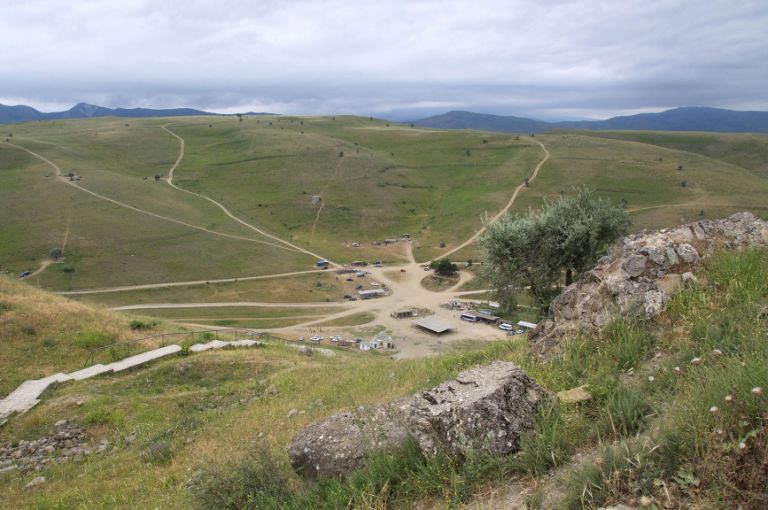
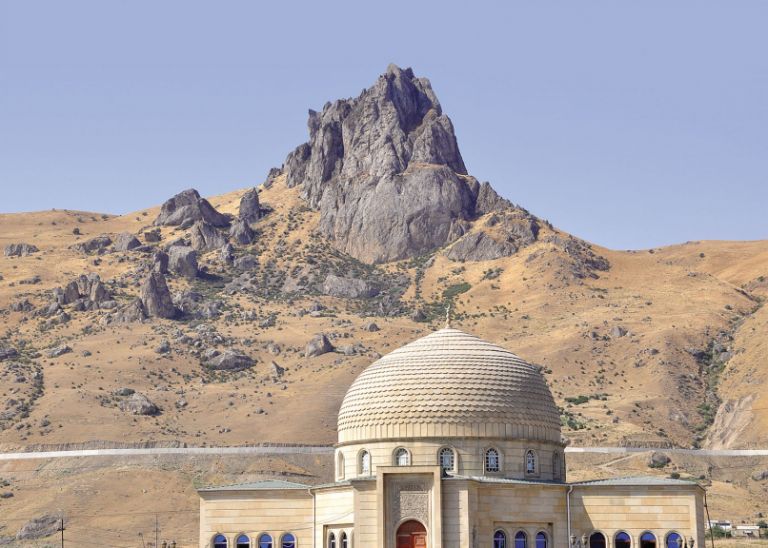
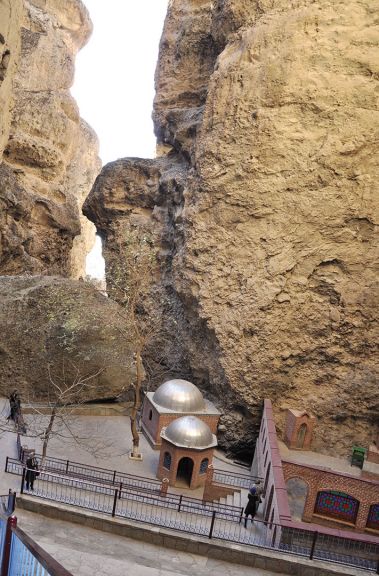
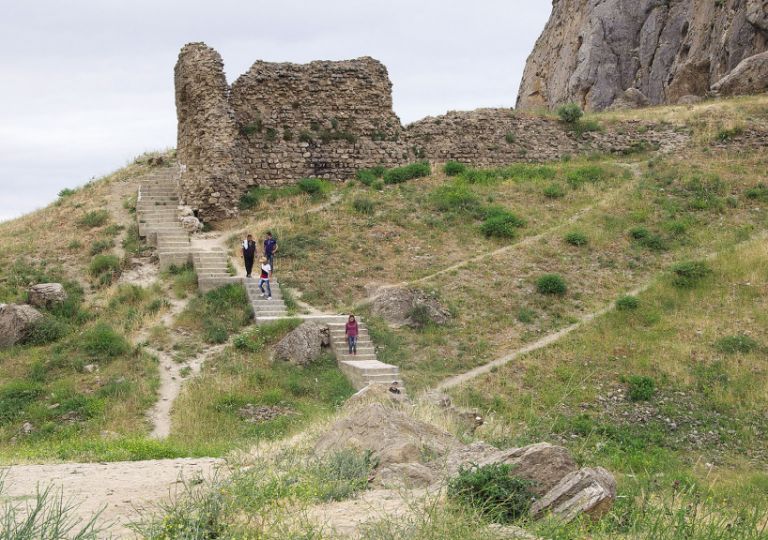
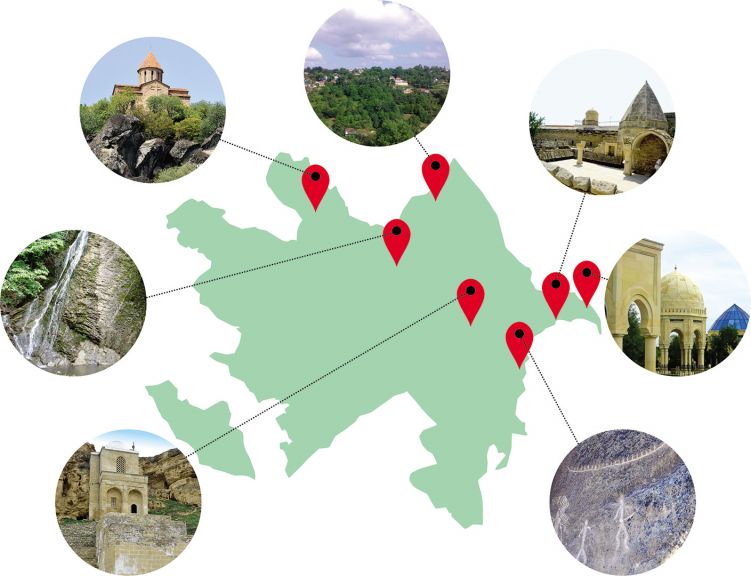
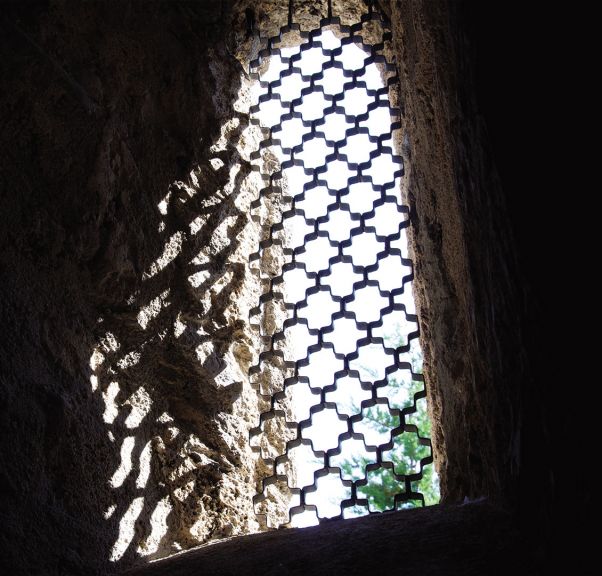
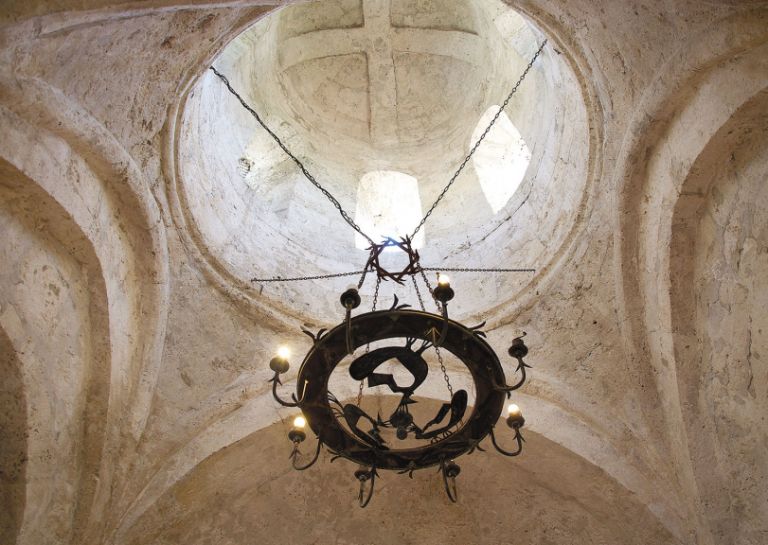
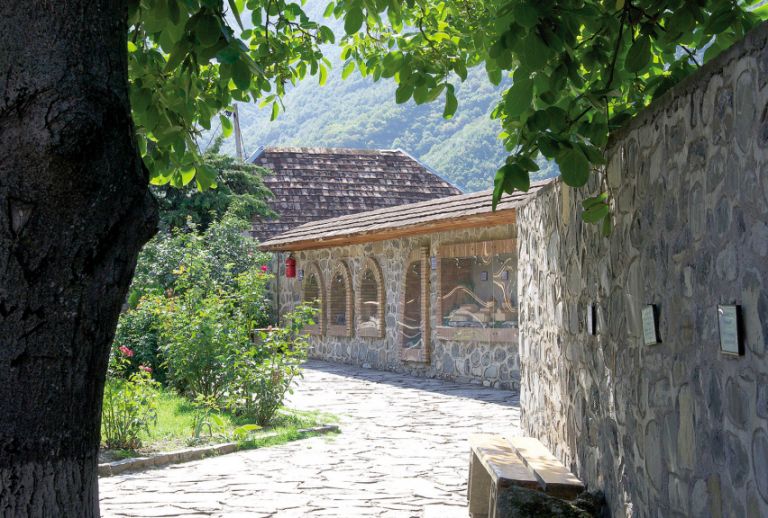


.jpg)